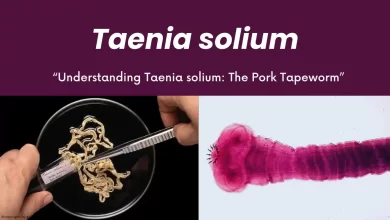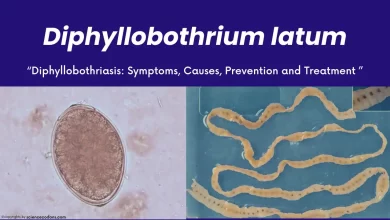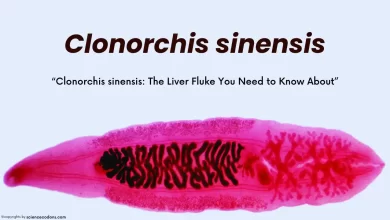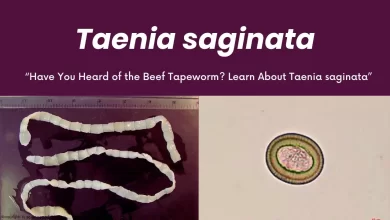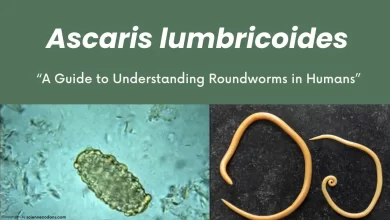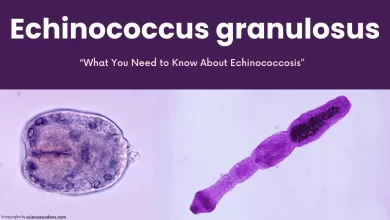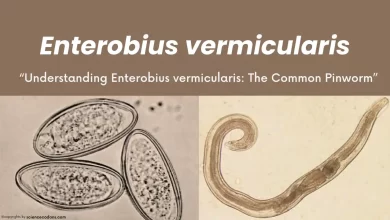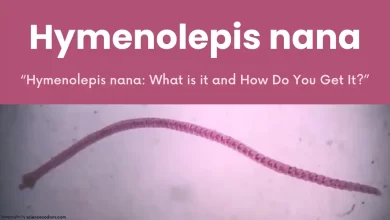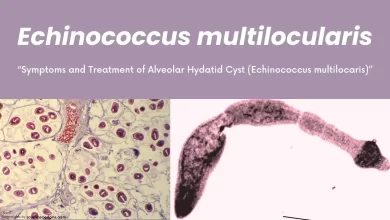Paragonimus westermani is a trematode that can inhabit the human lung, potentially causing disease and Infection. This worm is unique among trematodes in its ability to live in the human lung and produce symptoms similar to a cold. In this article, we will conduct a specialized review of this parasite and its characteristics.
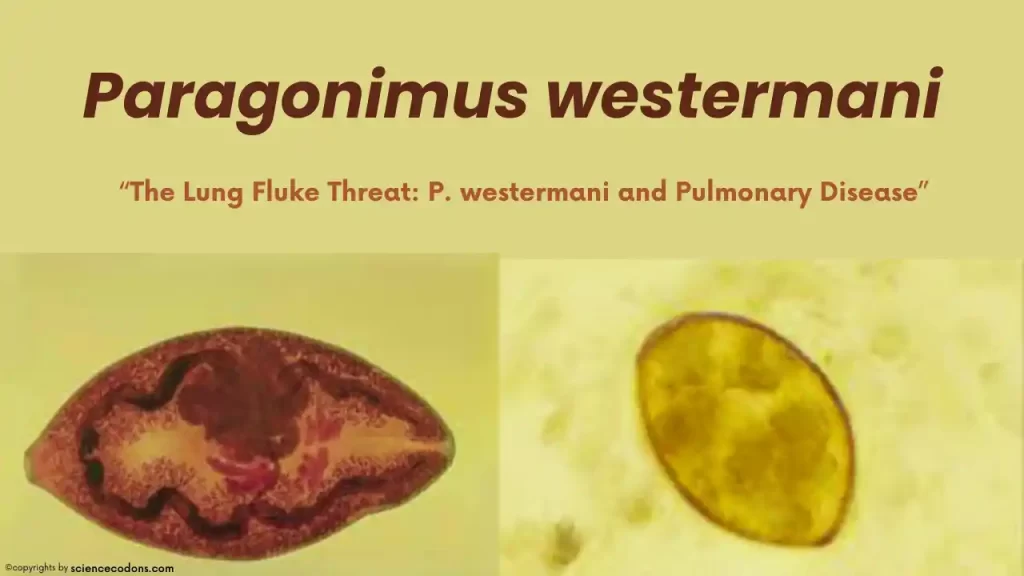
Due to the prevalence of diseases caused by this parasite in East Asian countries, it is commonly known as the Eastern lung fluke. Paragonimus westermani can live up to 20 years!
What is P. westermani? [Morphology & Characteristics]
The adult form of Paragonimus westermani resembles a coffee bean in size, shape, and color when alive. Adult worms are approximately one centimeter in length. They are plump and fleshy, usually red to brown. They possess a thick, thorny tegument that gives them an appearance similar to a coffee bean.
- Their suckers are of equal size.
- Their scolex (head) is simple, long, and unbranched.
Reproductive Organs
Their ovaries are branched, but their testes are lobed; the reproductive system follows the OTT formula. They do not possess a cirrus and cirrus sac. The eggs are usually immature, measuring 100 by 60 microns. The eggs have a thick and distinct operculum (valve) that has a shoulder shape on both sides of the worm.
Life Cycle of Paragonimus westermani
This worm resides in the human lung, but the eggs are excreted in humans in two ways: either sputum or feces. People who habitually swallow sputum usually ingest the egg present in the sputum, and the egg of Paragonimus westermani enters the digestive system and is excreted with feces.
| Stage | Description |
|---|---|
| Egg Stage |
|
| Snail (First Intermediate Host) |
|
| Crustacean (Second Intermediate Host) |
|
| Human Infection |
|
The egg of this parasite is immature and needs to mature before it can cause Infection. The eggs mature after 2-3 weeks of being in water, and the miracidium (larval stage) emerges from the egg through the operculum. The miracidium swims with its cilia and enters the first intermediate host (a snail), where it goes through the sporocyst, redia, and cercaria stages within 13 weeks.
The cercaria exits the snail’s body and enters the second intermediate host (a freshwater crab or shrimp), where it transforms into a metacercaria in the crab’s muscles (this transformation takes 4-8 weeks).
Human Infection
If a human consumes an infected shrimp or crab raw or half-cooked, the crab muscles are digested in the stomach, and an adult worm emerges from the metacercaria in the intestine. This worm pierces the human intestine and migrates through the peritoneal cavity, pierces the diaphragm, digs a tunnel inside the lungs, and reaches the depth of the lung tissue. Once it reaches the lung, it usually secretes a capsule around itself, which also protects the parasite from the immune system. Paragonimus westermani is often seen as two worms that mature between 5 to 6 weeks and start laying eggs.
Clinical Symptoms in P. westermani Infection
The disease caused by this parasite is called paragonimiasis. The patient usually experiences chronic chest pain, cough, and bloody sputum (Hemoptysis), which generally has a bad fishy smell, lung infiltration accompanied by water accumulation in the lung, nodules, and abscess formation.
A patient with paragonimiasis also has a fever and eosinophilia, which are commonly seen in parasitic diseases. Migration of adult worms to areas such as the brain, spinal cord, abdominal area, subcutaneous, and even myocardium may occur. The radiographic image usually shows a picture similar to tuberculosis in the patient. The migration of eggs has also been observed, which can cause granulomatous reactions in the tissue. Paragonimiasis is usually common in the abdominal area and often has no symptoms.
| Phase | Symptoms |
|---|---|
| Acute | Diarrhea, abdominal pain, fever, cough, urticaria, hepatosplenomegaly, pulmonary abnormalities, eosinophilia |
| Chronic | Cough, expectoration of discolored sputum, hemoptysis, chest radiographic abnormalities |
| Extrapulmonary | Seizures, headache, double vision, confusion, vomiting, neck stiffness, muscle weakness |
Diagnosis and Treatment of P. westermani
Diagnosis
Clinical symptoms combined with laboratory tests (such as observing bloody sputum, cough, etc.) assist in diagnosing Paragonimus westermani. Both sputum and fecal tests are conducted to identify the eggs, which can be observed in the sputum and feces based on the previously mentioned characteristics.
Treatment
For treating Paragonimus westermani, Praziquantel is administered at a dosage of 25 mg/kg for three days. If symptoms persist, the treatment is repeated. Praziquantel is an anti-flatworm medication that affects the worms’ calcium channels. This action paralyzes their sucker muscles, causing the worm to detach and be expelled.
In cases where the worm has migrated to the brain, a condition known as Cerebral paragonimiasis, the treatment protocol is similar to that of Cysticercosis. Both Praziquantel and steroids are prescribed. It’s important to note that 5% of such cases have resulted in patient death within two years.
Protecting Yourself from Paragonimiasis
Preventing infection from Paragonimus westermani involves several key steps:
- Avoid Raw Crustaceans: Never eat raw freshwater crabs or crayfish, as they may harbor the parasite.
- Proper Cooking: Ensure that crabs and crayfish are cooked to at least 145°F (~63°C) to kill the parasite.
- Safe Food Handling: Follow safe food handling practices, including thorough cooking of freshwater crustaceans.
- Traveler Awareness: Travelers to endemic areas should be advised to avoid traditional meals containing undercooked freshwater crustaceans.
- Immediate Treatment
- Water Safety
- Control Snail Population
Conclusion
Paragonimus westermani represents a significant health concern in regions where raw or undercooked crustaceans are commonly consumed. Understanding its life cycle, symptoms, and treatment options is crucial for preventing and managing paragonimiasis. Public health education and food safety measures are key to controlling the spread of this parasite and protecting communities from its impact. Remember, the best defense against paragonimiasis is awareness and proper food preparation. Stay informed and stay safe.
Reference
- ncbi.nlm.nih.gov/pmc/articles/PMC4360902/
- Du WX, Zhu XQ, [et al]. Paragonimiasis westermani: epidemiology, diagnosis and treatment. Chinese Medical Journal. 2012; 125(19): 3620–3626. [PubMed: 23203342]
- Tropical Medicine and Parasitology by Mark J.dP. Fleming & David Hughs
- Lee SH, Rim HJ, [et al.] Clinical features and CT findings of pulmonary paragonimiasis westermani. Korean J Radiol. 2008;9(1):33-40. [PubMed: 18278000]
- Luke S, De Silva NM, Wairimu PM, [et al.]. Paragonimiasis in Africa: a neglected foodborne zoonotic trematode infection. PLoS Negl Trop Dis. 2014;8(6):e2820. [PubMed: 24901504]
